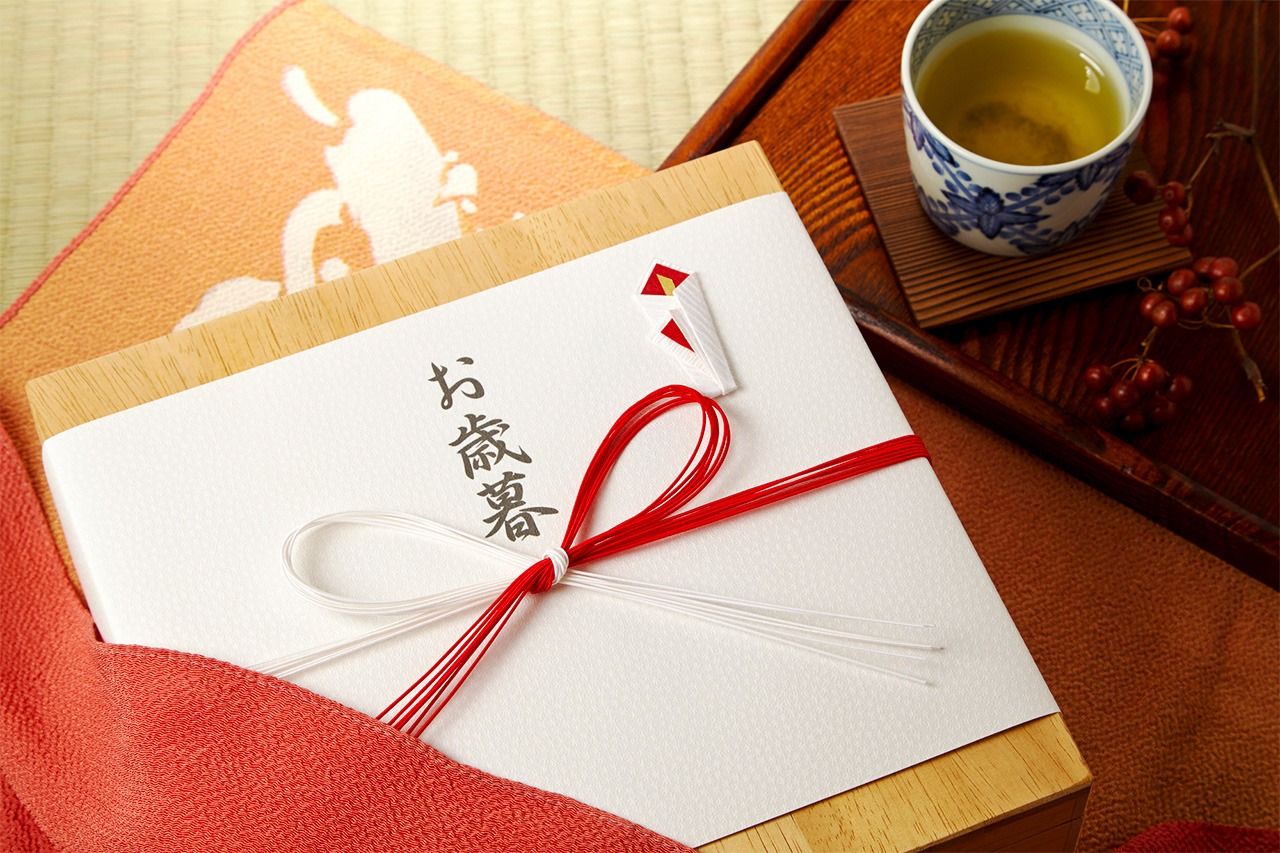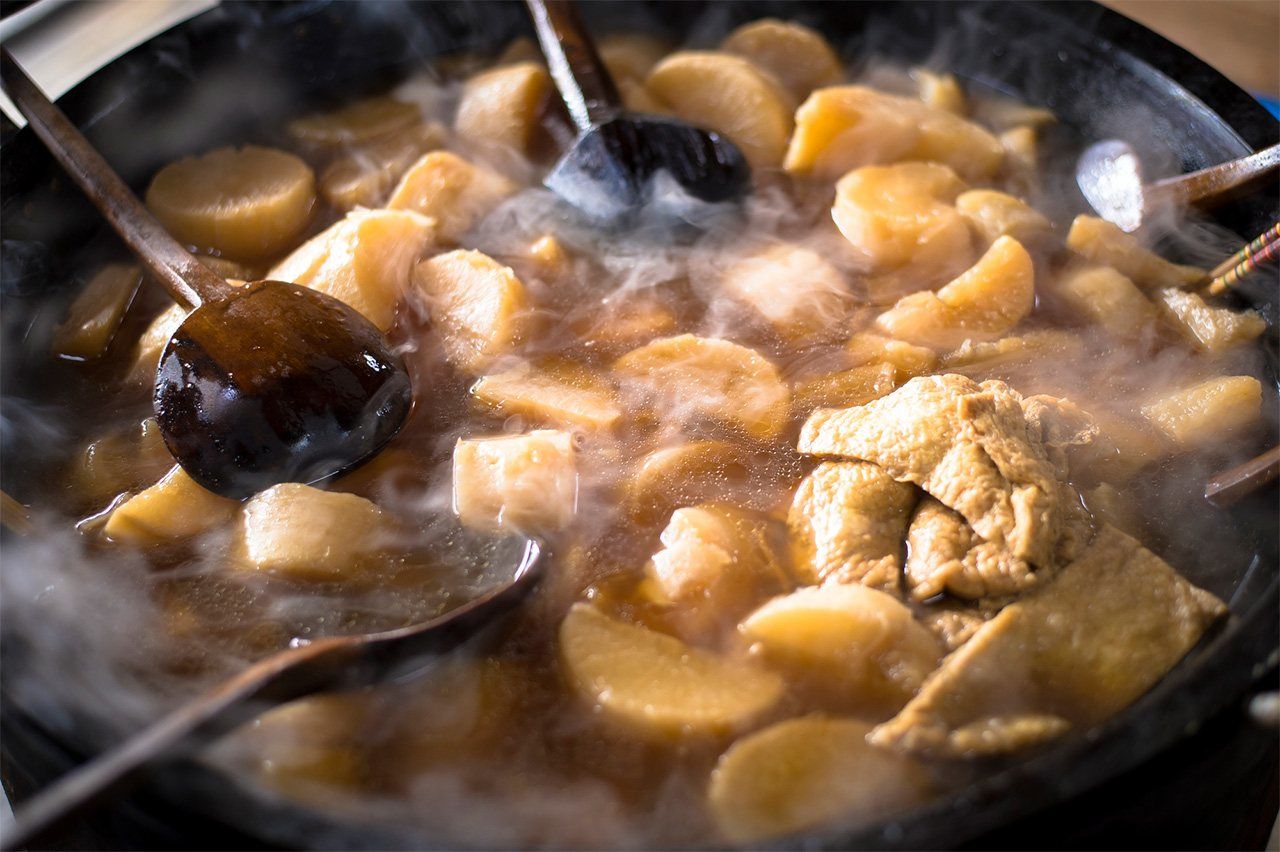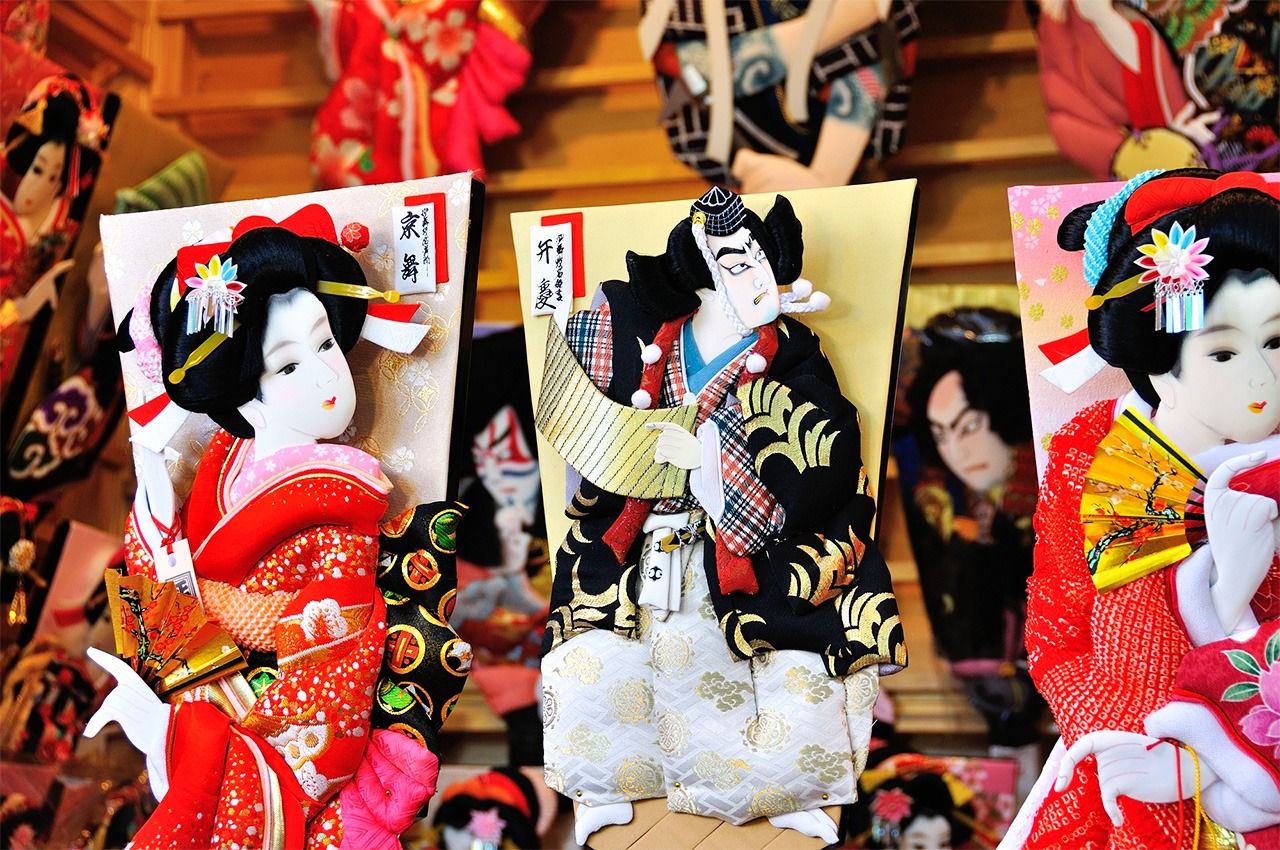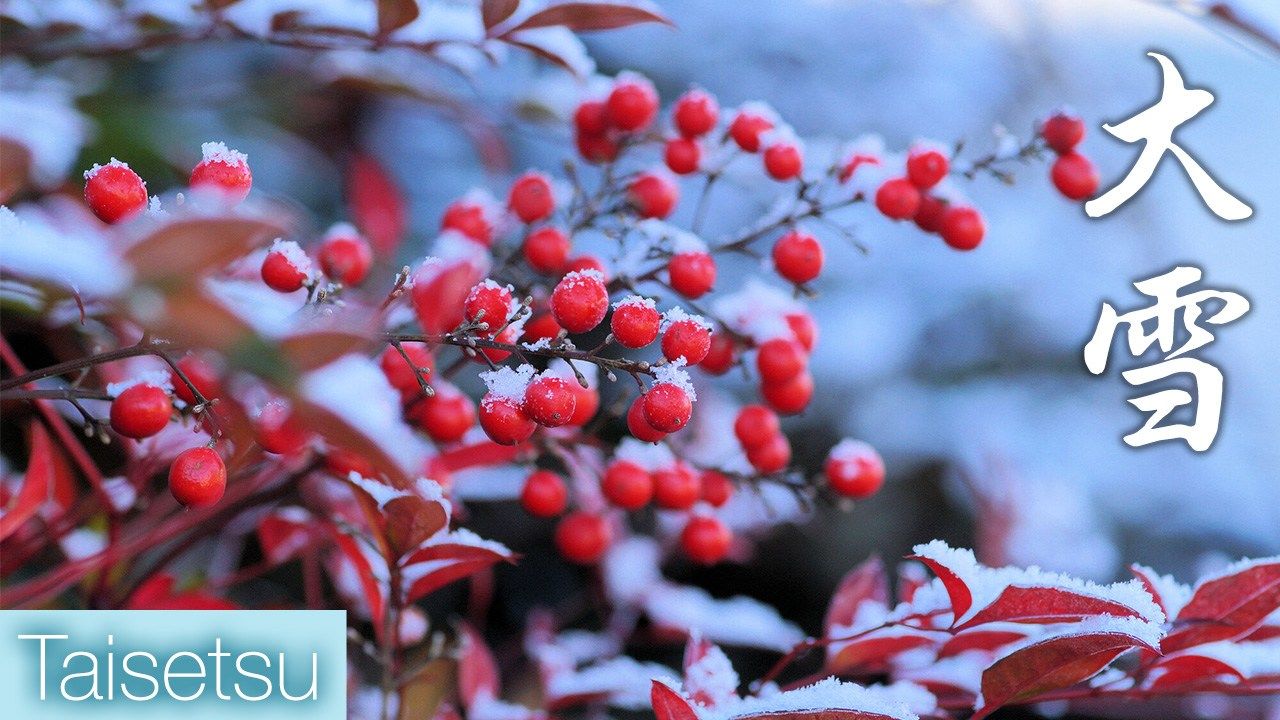
Taisetsu (Greater Snow)
Culture Environment History Food and Drink Society- English
- 日本語
- 简体字
- 繁體字
- Français
- Español
- العربية
- Русский
Taisetsu (Greater Snow) begins around December 7 in the modern calendar. Weather reports often speak of the advancing “winter shōgun,” referring to the intensely cold air mass that descends from Siberia. It brings snow to areas on the Japan Sea side of Honshū as it hits the mountains that form the “backbone” of the country’s main island, and cold, blustery northwesterly winds to areas on the Pacific Ocean coast. This is a hectic time of the year, with preparations underway for the New Year holiday period, combined with an increased number of year-end engagements.
This article will look at events and natural phenomena in the period roughly from December 7 to 21.
Seibo (late November to December 20)
Seibo, literally “year-end,” refers to gifts sent to express appreciation. In eastern Japan, people send the gifts starting from late November, but in the west of the country, tradition dictates they be sent from around December 10 to December 20.
Daikon-daki (December 9–19)
Daikon-daki is a hot pot event held at many shrines and temples in Kyoto. At Ryōtokuji, some 3,000 green-top daikon radishes are cooked together with aburaage (thin-sliced deep-fried tōfu), and served to a throng of worshipers. Slowly simmered daikon-daki is a seasonal favorite in Kyoto.
Yukizuri
In regions that experience heavy snowfalls, such as Tōhoku and Hokuriku, preparations are made in November or early December to protect garden trees and shrubs. The methods used, such as yukizuri, differ in each region. Kenrokuen, in Kanazawa, Ishikawa Prefecture, is one of Japan’s most famous gardens and is nationally designated as a Special Place of Scenic Beauty. Trees in the garden are protected from heavy snow using yukizuri, a technique where bamboo poles are attached to the tree trunks and ropes are tied from the tops of the poles to support branches, creating cone shapes over the trees.
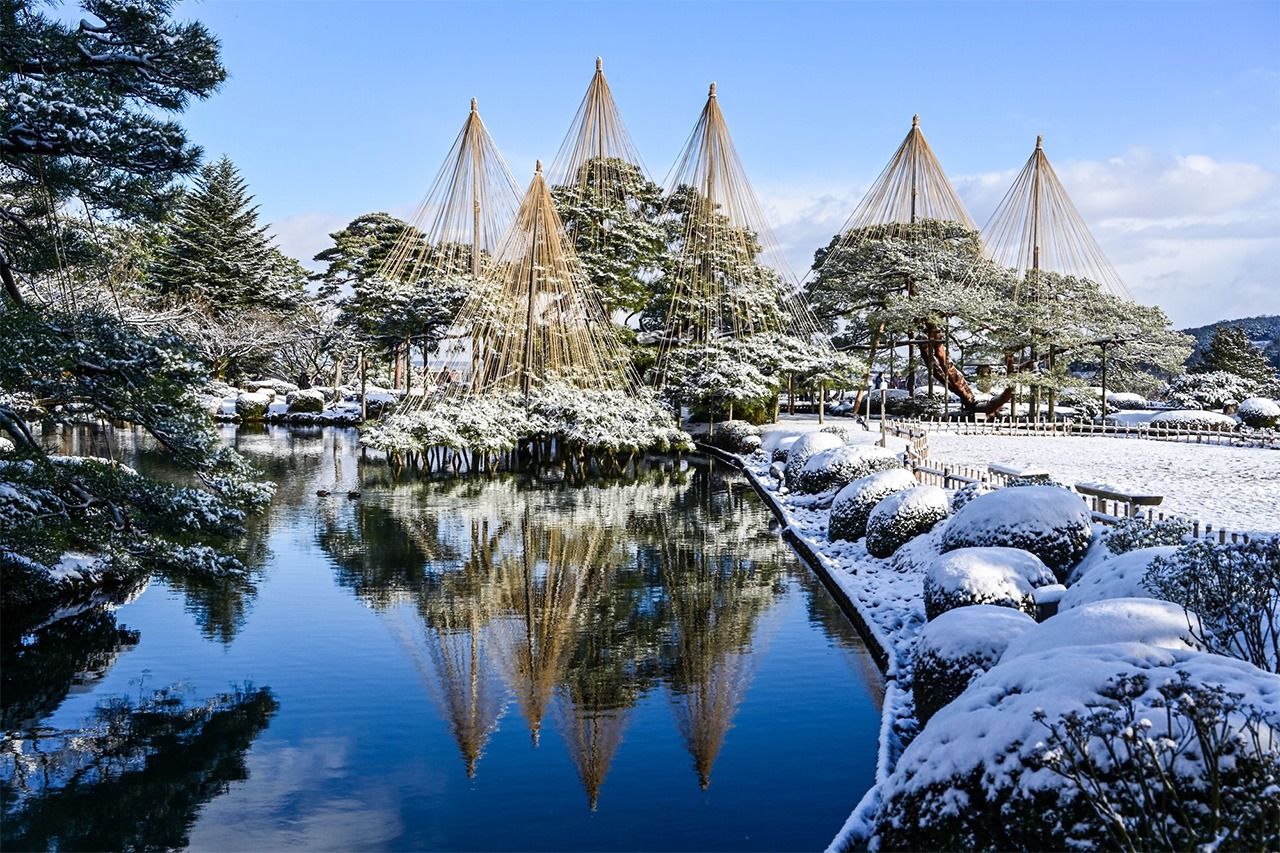
Yukizuri at Kenrokuen in Kanazawa. (© Pixta)
Susuharai (December 13)
The traditional start of New Year festivities. In the Edo period (1603–1868), people performed susuharai (equivalent to “spring cleaning”) both in and around their house on the thirteenth day of the twelfth month of the lunar calendar. Even now, many temples conduct a big clean up on December 13.

End-of-year cleaning (© Pixta)
Temples also used to dispatch someone to fetch pine for New Year’s decorations from the lucky direction of that year. Other auspicious plants used in holy adornments include sakaki, yuzuriha, and urajiro. The symmetrical layout of the leaves of urajiro are said to signify a harmonious marital relationship, while the white underside symbolizes a couple staying together into old age with gray hair. The fern’s luxuriance is compared with fertility.

Sakaki branches for the kami (deities) (left); yuzuriha leaves and urajiro ferns. (© Pixta)
Tsubaki (Camellias)
Tsubaki or camellias are mentioned in the ancient chronicle Nihon shoki and the poetry collection, Man’yōshū. The flower was once referred to as a Japanese rose in the West. Nagasaki’s Gotō Islands and the Seven Islands of Izu, Tokyo, are renowned for wild camellias. The oil is used in Japan as a hair tonic and a luxury cooking oil, while the branches are used to produce personal seals or in other craft work. Even today, they are used for making combs and game pieces for shōgi.
Camellia is an evergreen tree that still flowers in cold weather—said to represent vitality and endurance. The flowers were highly valued by the aristocracy in the Heian period (794–1185). But in the Edo period, samurai considered them bad luck because, rather than gradually losing their petals or withering, the flowers drop off, as if they were beheaded.
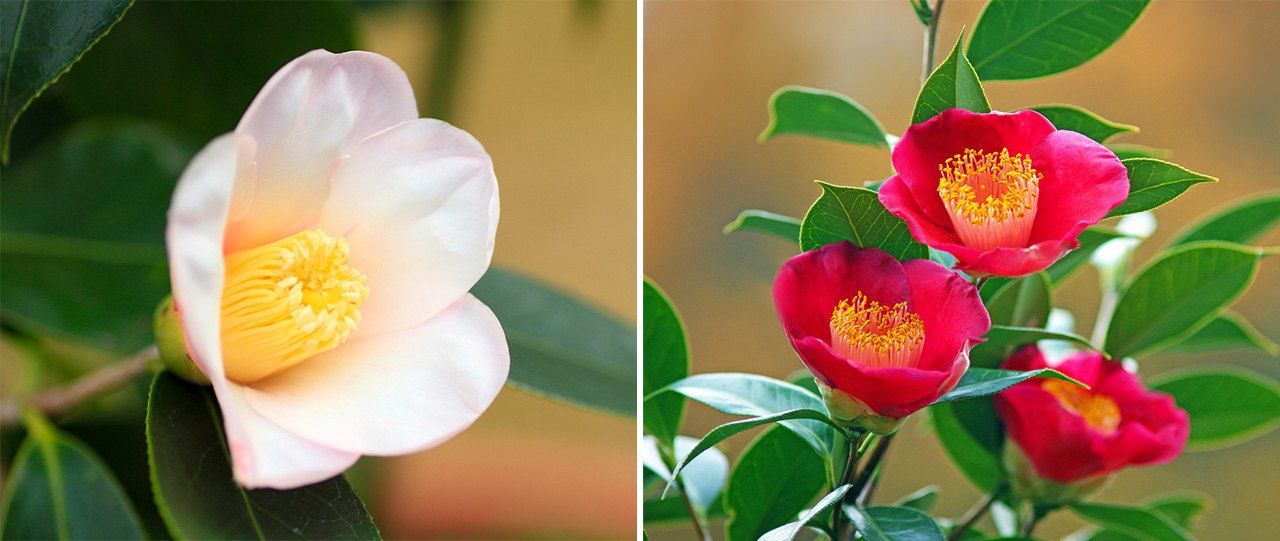
Shiro-wabisuke, a favorite flower for decorating a tearoom (left); winter camellia. (© Pixta)
Kanji Day (December 12)
The Japan Kanji Aptitude Testing Foundation has designated December 12 as Kanji Day (the 12/12 date can be read ii ji ichi ji, meaning “a single good character”). The public votes on a kanji character that reflects the current state of society. The Kanji of the Year is revealed in a ceremony at Kiyomizu Temple in Kyoto, when the character is written using a huge brush on washi paper measuring 1.5 by 1.3 meters. Chinese characters, known as kanji in Japan, have been discovered dating from more than 3,000 years ago, although they have been modified somewhat in Japan, and there are also Japanese-created characters, called kokuji or “national kanji.”
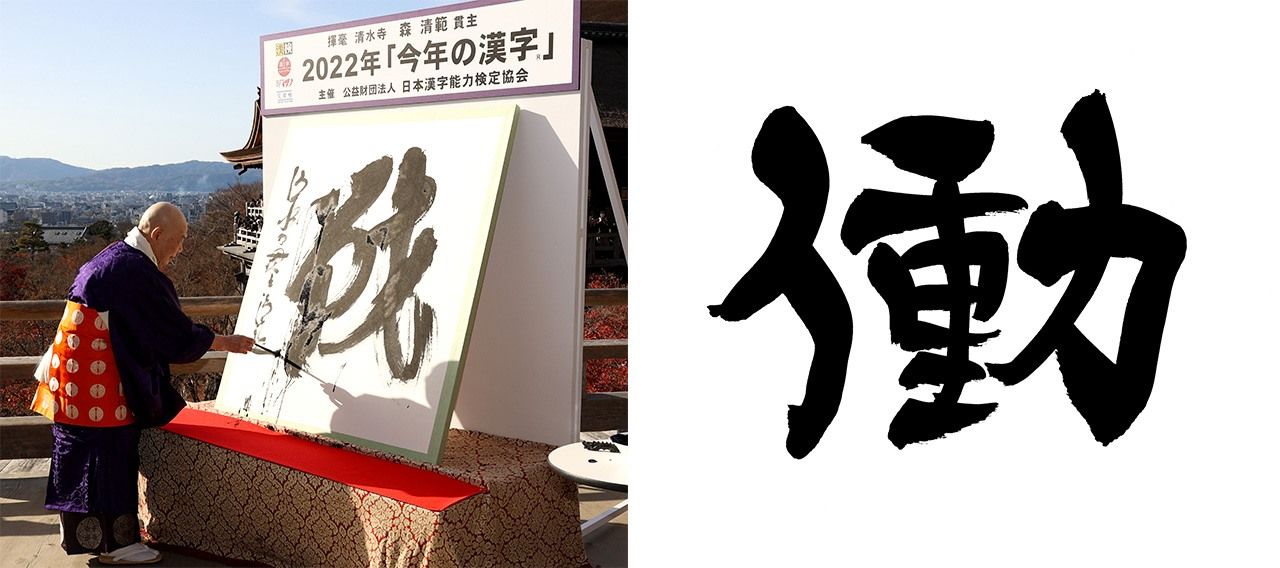
Mori Seihan, head priest at Kiyomizudera, writes 戦 (ikusa, or the verb tatakau, meaning “conflict”), the Kanji of the Year for 2022, on December 12 at the Kyoto temple. (© Jiji); hataraku, a kanji meaning “to work” invented in Japan. (© Pixta)
Year-End Market Featuring Hagoita at Sensōji in Asakusa, Tokyo (December 17–19)
A year-end market is held at the temple of Sensōji in Asakusa, Tokyo, selling hagoita wooden paddles used in a form of badminton, and other goods considered to attract good luck at New Year. Hagoita are believed to ward off evil to help young girls to grow up in good health. Hanetsuki, a game similar to modern badminton, became popular in the Edo period. In later years, decorative paddles were produced featuring the portraits of famous kabuki actors and other celebrities. They were sold at hagoita markets, held at the end of the year.
Oysters
Winter is the best season for oysters, sometimes referred to as “milk of the sea” in Japan thanks to their rich flavor. Pacific oysters are in season from November to March. They are popular served raw, crumbed and deep-fried, or in hot pot dishes.
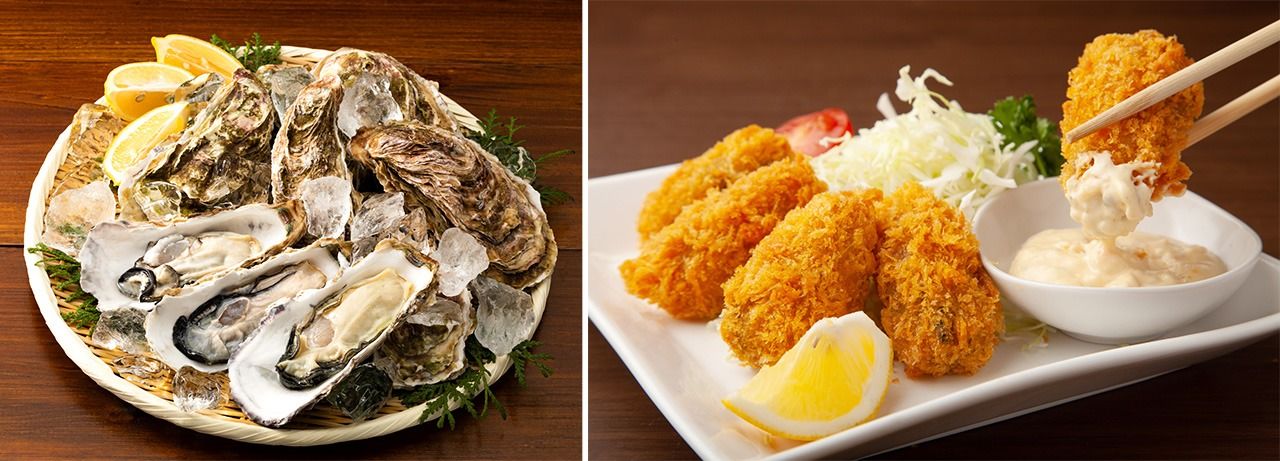
Raw oysters (left); kaki furai (crumbed oysters). (© Pixta)
Chijimi Spinach
Chijimi is a variety of spinach cultivated outdoors in winter, cherished for its sweetness and concentrated umami taste. It has short stalks and thick leaves, and spreads across the ground in an effort to obtain as much of the meager winter sunlight as possible. To withstand the cold, the plant has a lower water content but higher sugar content, which accounts for its sweeter taste.
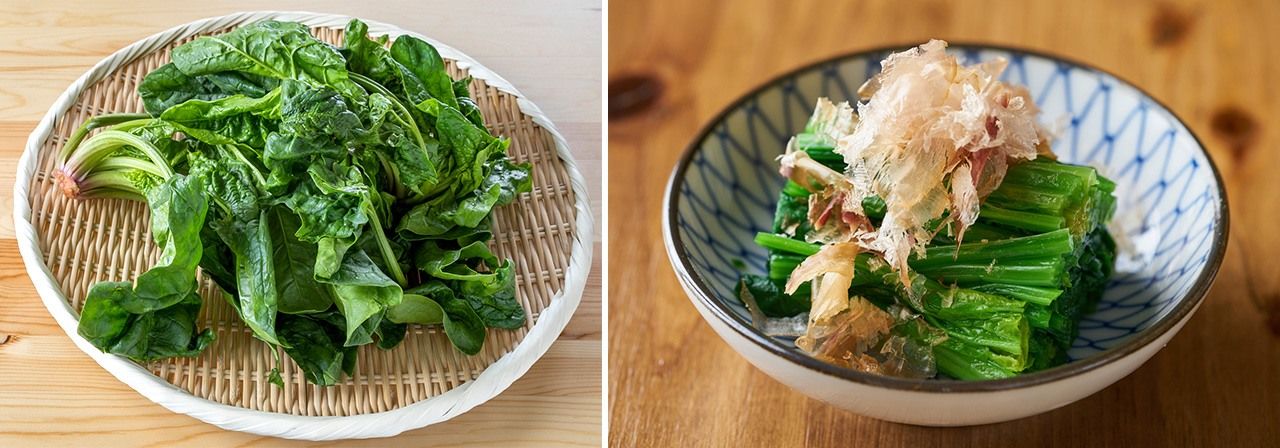
Chijimi spinach (left); spinach ohitashi (boiled and soaked into bonito-flavoured soy sauce). (© Pixta)
Salmon
Salmon mature at sea over a number of years before returning to the river where they were born. They are fished in Hokkaidō, Tōhoku, and Hokuriku in the winter. Ainu indigenous people from northern Japan call the salmon “kamui chep,” meaning “fish of the gods.” Preserved salmon is prized as a food source to weather winter. Fresh salmon can be cooked in many ways, including meunière style (fried in butter), in aluminum foil, and hot pots. Aramaki-sake is salmon that is salted then wrapped and dried in straw. As the water content dissipates, the amino acids break down, enhancing its umami flavor.
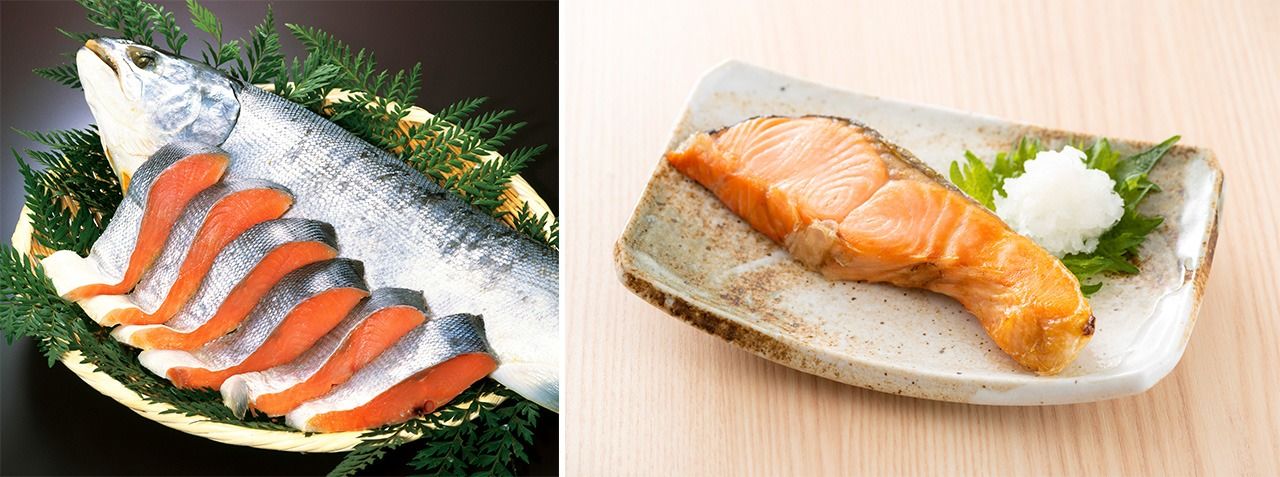
Slices of salted aramaki-sake salmon (left); grilled salmon. (© Pixta)
(Supervised by Inoue Shōei, calendar researcher and author, Shintō minister, and guest lecturer at Tōhoku Fukushi University. Banner photo: Snow-sprinkled nanten or “heavenly bamboo” berries. © Pixta.)
salmon kanji of the year kanji oyster Taisetsu Seibo Yukizuri susuharai camellia
